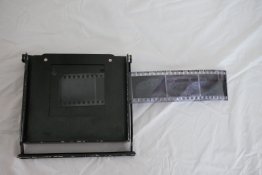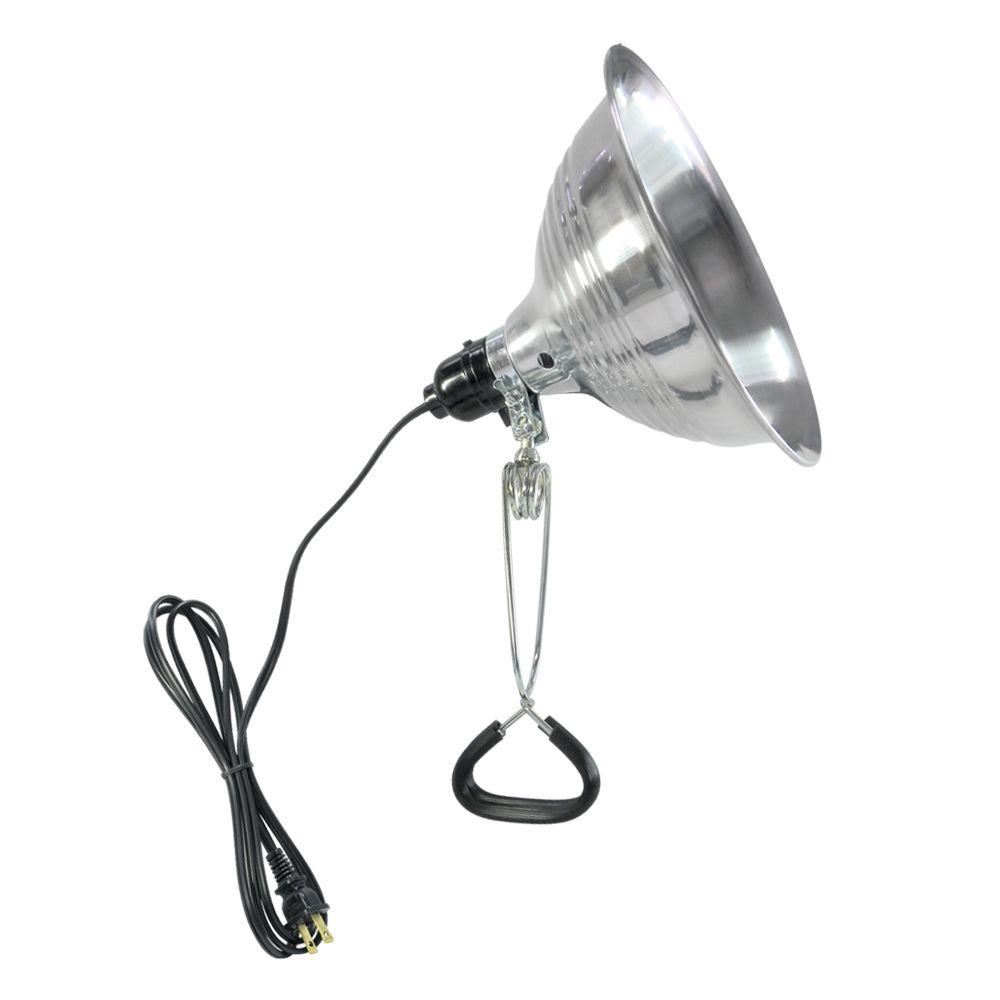Hello all. I am having trouble with development of paper in my first attempt to set up a darkroom. I will not get into my camera setup or the film development aspect to this adventure unless someone asks.
I set up my film shiny side up in a Beseler Cadet 35 and adjusted the enlarger to get as sharp looking an image onto the frame created by my easel to fit a 5x7 paper sheet as I could. Then taking out a sheet of Ilford Multigrade 5x7 in red light I expose it to make my very first print with 5, 10, 15 and 20 second strips using a Priority Mail envelope for a mask and dip into a 14:1 solution of Ilford Multigrade paper developer for one minute (I later learn it should have been 90 seconds). My image appears (!!!) and then goes completely black (!!!) over the course of 60 seconds before making successive trips to Ilfostop and Kodafix before finishing up with a wash and hang dry. For the next few minutes I wait in the dark for it to dry hopeful that my first image might somehow reappear...but no. My firsy print is just solid black, not the slightest hint of what it was supposed to have been.
Through four more attempts I try different exposure times in the Beseller until I take the daring move of leaving the print in for less time in the developer (since it appears quite nicely after about 20 seconds before disappearing completely into blackness some time after 50 seconds in all previous tries). On the sixth attempt a very light image appears after developing for 30 seconds and exposure for 3/6/9. For this I used a no-name cheaper alternative brand paper to Ilford called Multitone. Next I go for 5/10/15 and 45 seconds of development (half what Ilford says!) and a darker but still discernible image appears on Ilford Multigrade. FWIW Ilford supplies an instruction sheet with their paper, but I can make no sense of it and it seems to have an enlarger far more sophisticated than my little Beseler in mind. The Multitone needless to say has no instructions of any kind.
Long story short through some more experimentation I reach the following tentative conclusions:
• Ilford Multigrade is best developed for 45 seconds, Multitone for 30. Both of these are way below the 90 seconds Ilford calls for when using a 14:1 solution of their Mutligrade paper developer (temperature is as close to 20°C as I can make it).
• An exact count of seconds in how long your paper sits in the developer is very important to how your image will eventually appear.
• The longer the development time the darker the image.
• The longer the exposure time the higher contrast the image.
The Besseler's lens was set to f/8 and I measured 10" from the bottom of the lens to the top of the paper-holding surface of the easel. The Beseler has a 75W PH140 bulb.
So my questions for the forum are as follows (plus a bonus question at the end):
1. Are my development times correct? Is Ilford's spec of 90 seconds way off? Really what should I expect the development times to be (seems to me to be 20-50 seconds).
2. What is a realistic exposure time?
3. While in the end I did manage to create images of some sort they are quite poor, low to very low contrast and with wavey lines which I suspect to be a result of not being able to insert the paper evenly into each tray. What am I doing wrong? BTW I am inserting the paper into the dev, stop and fix upright while washing is upside down.
Bonus question: My Beseller's film holder doesn't seem to be able to hold flat the end exposure of a short length of film. From everything I've seen online it seems people cut a film roll into 5-exposure strips for easy light table viewing and storage in a binder. The film holder has one side which seems appropriate for 35mm but the other is more like the size of a 120! As such the end of a film strip just hangs down through the larger hole (see pictures below). Is my film holder defective or missing something or is it supposed to look like this? Am I only supposed to use full-length film rolls with the Beseller Cadet?


I set up my film shiny side up in a Beseler Cadet 35 and adjusted the enlarger to get as sharp looking an image onto the frame created by my easel to fit a 5x7 paper sheet as I could. Then taking out a sheet of Ilford Multigrade 5x7 in red light I expose it to make my very first print with 5, 10, 15 and 20 second strips using a Priority Mail envelope for a mask and dip into a 14:1 solution of Ilford Multigrade paper developer for one minute (I later learn it should have been 90 seconds). My image appears (!!!) and then goes completely black (!!!) over the course of 60 seconds before making successive trips to Ilfostop and Kodafix before finishing up with a wash and hang dry. For the next few minutes I wait in the dark for it to dry hopeful that my first image might somehow reappear...but no. My firsy print is just solid black, not the slightest hint of what it was supposed to have been.
Through four more attempts I try different exposure times in the Beseller until I take the daring move of leaving the print in for less time in the developer (since it appears quite nicely after about 20 seconds before disappearing completely into blackness some time after 50 seconds in all previous tries). On the sixth attempt a very light image appears after developing for 30 seconds and exposure for 3/6/9. For this I used a no-name cheaper alternative brand paper to Ilford called Multitone. Next I go for 5/10/15 and 45 seconds of development (half what Ilford says!) and a darker but still discernible image appears on Ilford Multigrade. FWIW Ilford supplies an instruction sheet with their paper, but I can make no sense of it and it seems to have an enlarger far more sophisticated than my little Beseler in mind. The Multitone needless to say has no instructions of any kind.
Long story short through some more experimentation I reach the following tentative conclusions:
• Ilford Multigrade is best developed for 45 seconds, Multitone for 30. Both of these are way below the 90 seconds Ilford calls for when using a 14:1 solution of their Mutligrade paper developer (temperature is as close to 20°C as I can make it).
• An exact count of seconds in how long your paper sits in the developer is very important to how your image will eventually appear.
• The longer the development time the darker the image.
• The longer the exposure time the higher contrast the image.
The Besseler's lens was set to f/8 and I measured 10" from the bottom of the lens to the top of the paper-holding surface of the easel. The Beseler has a 75W PH140 bulb.
So my questions for the forum are as follows (plus a bonus question at the end):
1. Are my development times correct? Is Ilford's spec of 90 seconds way off? Really what should I expect the development times to be (seems to me to be 20-50 seconds).
2. What is a realistic exposure time?
3. While in the end I did manage to create images of some sort they are quite poor, low to very low contrast and with wavey lines which I suspect to be a result of not being able to insert the paper evenly into each tray. What am I doing wrong? BTW I am inserting the paper into the dev, stop and fix upright while washing is upside down.
Bonus question: My Beseller's film holder doesn't seem to be able to hold flat the end exposure of a short length of film. From everything I've seen online it seems people cut a film roll into 5-exposure strips for easy light table viewing and storage in a binder. The film holder has one side which seems appropriate for 35mm but the other is more like the size of a 120! As such the end of a film strip just hangs down through the larger hole (see pictures below). Is my film holder defective or missing something or is it supposed to look like this? Am I only supposed to use full-length film rolls with the Beseller Cadet?





